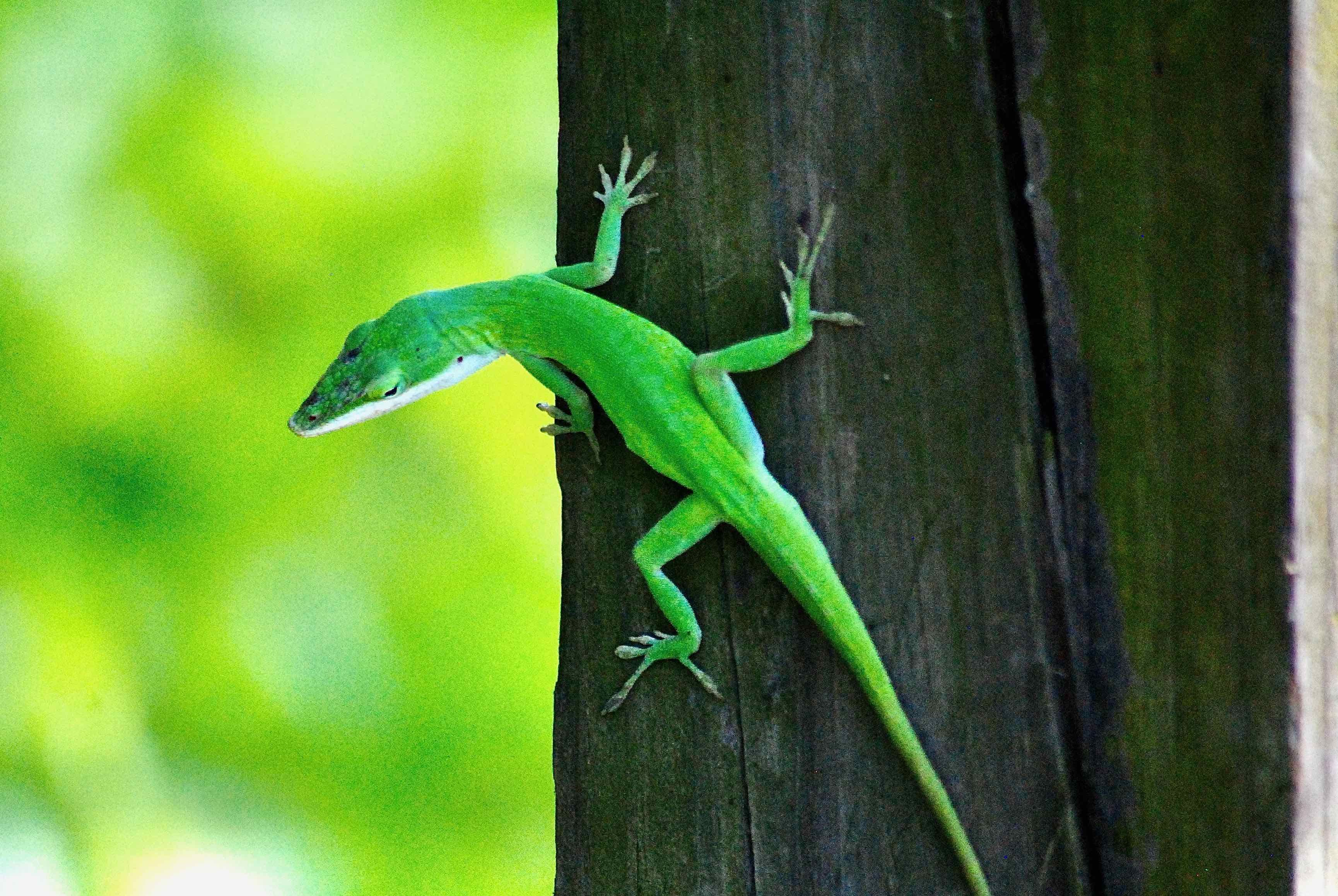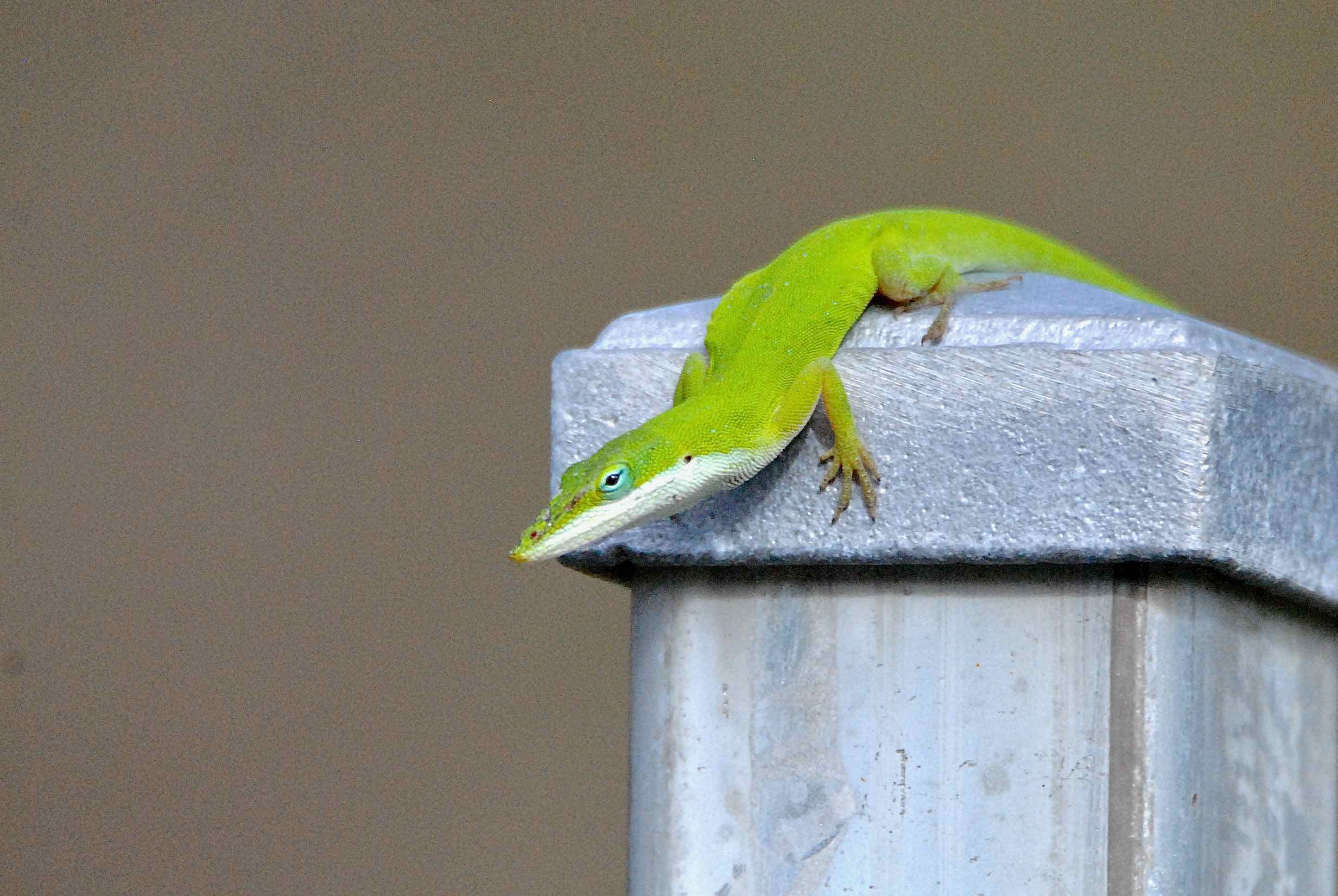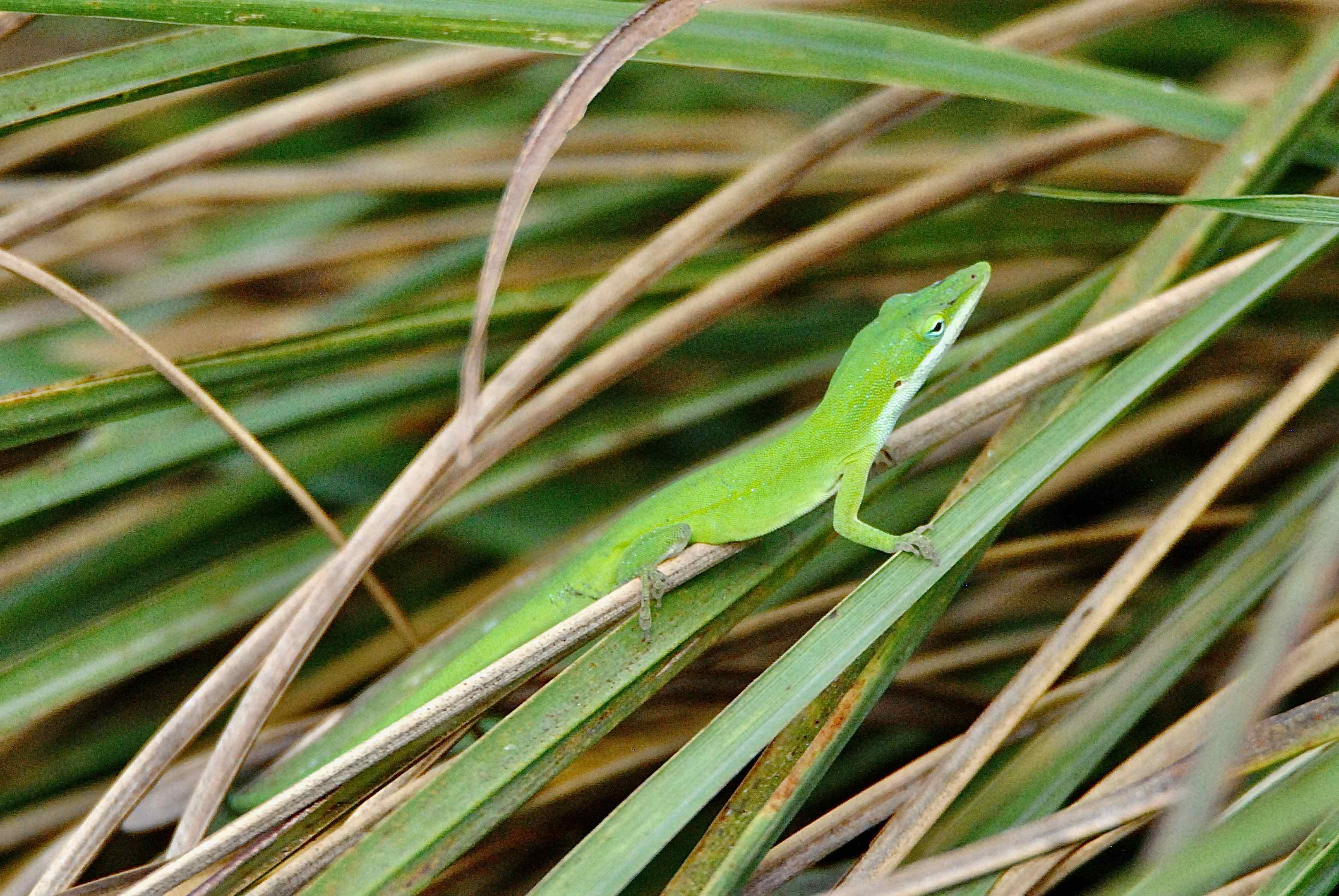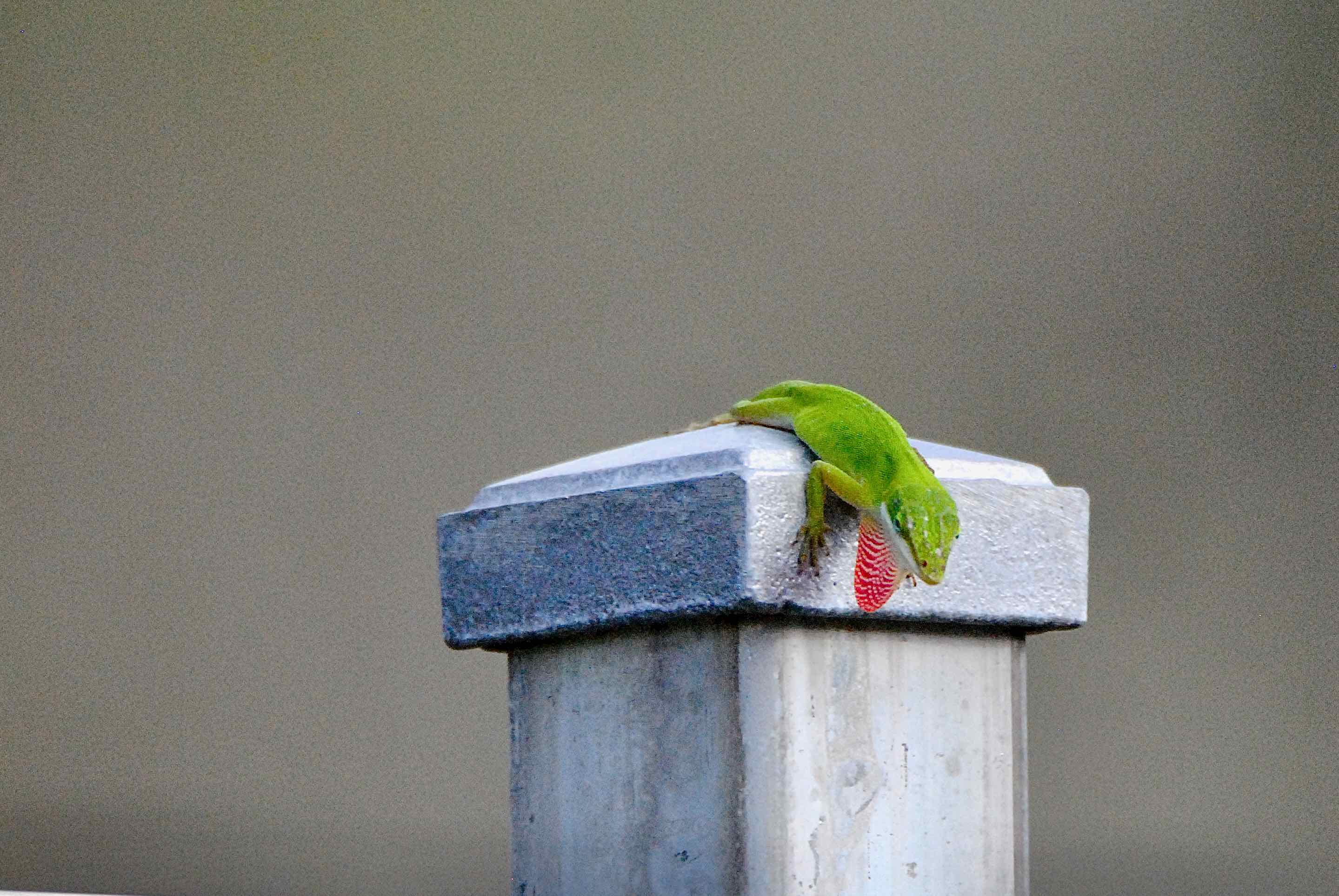
Green anole, photographed at Shark Valley, Everglades National Park, Miami, Miami-Dade County, in May 2014.
This is not a gekko, nor is it a chameleon, even though some call it that. It is a green anole, Anolis carolinensis. Green anoles do change colors, but they don't sell insurance. They're much better behaved than that.
It is a Florida native, unlike its more common cousin, the brown anole. It is the only anole native to the Southeast United States, and the only native lizard that changes colors — to gray or brown. Greens, when they do change, closely resemble the brown anole; browns, however, have a patterned back that the greens clearly lack. Some call the green anole, the American chameleon because of its ability to change shades, but that is a misnomer. Mood, temperature, humidity and health influence a green's color at a given moment.
Their range extends from North Carolina, which you would expect, given the scientific name, to Texas, including all of Florida. They prefer humid habitats — forests and swamps — but can also be found around the house.
Green anoles go between five and eight inches long, with a pointed head, slender body and long, tapered tail, which will break off if a predator grabs it. The tail alone can be more than half the body length. They climb via sticky pads found on their toes. Males are larger and also have a pouch on their throats called a dewlap that they inflate and display to get the attention of the ladies of the species. They bob their heads like they're doing pushups also to impress. If a female appears receptive, the male will bite her on the neck. Romance, green anole style. Once mated, the female will lay a single egg on the ground and bury it in leaf litter. She'll lay another a couple of weeks later, and again and again throughout summer. On average, she'll lay 15 to 18 eggs a year. And once laid, the offspring are on their own. No protection for the eggs, no protection for the young. Eggs take about five to seven weeks to hatch.
Young green anoles will hang around the same territory where they were born. They'll reach maturity in eight or nine months; their lifespan is between two and eight years.

There's a subspecies of green anoles in southwestern Florida called A carolinensis var. seminolus that is similar in most respects to other green anoles with one major exception. The dewlap on most green anoles is a mix of reds, yellows and oranges; the dewlap on seminolus is white or gray.
Green anoles are territorial creatures. Males will defend their patch of vegetation by putting up a variety of displays, including head bobs, pushups, inflating their dewlaps. They'll extend their necks and turn laterally to show their profile and erect crests along their back in order to convince their opponent who's boss. The loser bobs his head and retreats. According to the National Zoo, green males are so territorial that they'll attack their own reflection if they see it in a mirror.
The menu for the green includes bugs — ants, flies, termites, beetles, butterlfies and spiders, but they also will eat seeds, mollusks, grain and nuts. What they eat most is whatever is most abundant.
Greens were once as ubiquitous as the browns are today, But the browns have outcompeted and largely displaced greens from their habitat (sometimes eating them), and forced them to live higher in tree canopies than they used to. Some theorize the burgeoning green iguana population in South Florida is pushing brown anoles higher into the canopy, which would push green anoles higher still.
They also face competition from a somewhat similar-looking lizard called the knight anole, another non-native. The two species can be distinguished fairly easily — knights are much larger and have a mix of blacks and yellows. On the other hand, greens have been introduced to Hawaii, Guam, Japan, Cuba and the Bahamas. Despite its depleted numbers in Florida, the green anole is not listed as threated or endangered.
Green anoles are members of Iguanidae, the iguana family.
Shark Valley, Everglades National Park



